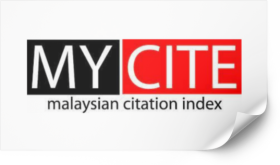Meta-Study of Sensitivity Analysis in Solar Renewable Energy Application
DOI:
https://doi.org/10.37934/progee.23.1.1425Keywords:
Uncertainty analysis, Sensitivity analysis, Solar renewable analysis, Extensive systematic literature reviewAbstract
Sensitivity analysis reveals the relative weights of the assumptions and input parameters used in the model. It differs from uncertainty analysis, which deals with the issue of how uncertain the forecast is. Both sensitivity and uncertainty analyses must map on a model behaves when certain input assumptions and parameters are allowed to fluctuate within the range of possible values. While going down one-dimensional corridors, various uncertainties and sensitivity studies continue investigating the input space, leaving room for the most undiscovered input elements. Numerous highly cited publications fall short of the fundamental criteria to thoroughly investigate the space of the input components, according to a thorough systematic examination of the literature. Despite being discipline-specific, the findings show a concerning absence of good practices and accepted norms. The conclusion listed a few potential causes for this issue and offered suggestions for how the approaches should be applied correctly.
References
A. Saltelli, I.y.M. Sobol, Sensitivity analysis for nonlinear mathematical models: Numerical experience, Matematicheskoe Modelirovanie 7(11) (1995) 16 – 28.
https://publications.jrc.ec.europa.eu/repository/handle/JRC11279.
A. Saltelli, G. Bammer, I. Bruno, E. Charters, M.D. Fiore, E. Didier, W.N. Espeland, J. Kay, S.L. Piano, D. Mayo, R. Pielke Jr, T. Portaluri, T.M. Porter, A.Puy, I. Rafols, J.R. Ravetz, E. Reinert, D. Sarewitz, P.B. Stark, A. Stirling, J. van der Sluijs, P. Vineis, Five ways to ensure that models serve society: A manifesto, Nature 582 (2020) 482–482. https://doi.org/10.1038/d41586-020-01812-9.
A. Saltelli, Sensitivity analysis for importance assessment, Risk Analysis 22(3) (2002) 579–590, 2002. https://doi.org/10.1111/0272-4332.00040.
R. Ghanem, D. Higdon, H. Owhadi, Handbook of uncertainty quantification, Springer, 2017.
B. Eisenhower, Z. O'Neill, S. Narayanan, V.A. Fonoberov, I. Mezic, A methodology for meta-model based optimization in building energy models, Energy and Buildings 47 (2012) 292–301. https://doi.org/10.1016/j.enbuild.2011.12.001.
W. Becker, J. Oakley, C. Surace, P. Gili, J. Rowson, K. Worden, Bayesian sensitivity analysis of a nonlinear finite element model, Mechanical Systems and Signal Processing 32 (2012) 18–31. https://doi.org/10.1016/j.ymssp.2012.03.009.
A. Saltelli, M. Ratto, T. Andres, F. Campolongo, J. Cariboni, D. Gatelli, M. Saisana, S. Tarantola, Global sensitivity analysis:T primer, John Wiley & Sons, 2008. https://doi.org/10.1002/9780470725184.
J. Norton, An introduction to sensitivity assessment of simulation models, Environmental Modelling & Software 69 (2015) 166–174. https://doi.org/10.1016/j.envsoft.2015.03.020.
F. Pianosi, K. Beven, J. Freer, J.W. Hall, J. Rougier, D.B. Stephenson, T. Wagener, Sensitivity analysis of environmental models: A systematic review with practical workflow, Environmental Modelling & Software 79 (2016) 214–232. https://doi.org/10.1016/j.envsoft.2016.02.008.
F. Ferretti, A. Saltelli, S. Tarantola, Trends in sensitivity analysis practice in the last decade, Science of The Total Environment 568 (2016) 666–670. https://doi.org/10.1016/j.scitotenv.2016.02.133.
R. Rosen, Life itself: a comprehensive inquiry into the nature, origin, and fabrication of life, Columbia University Press, 1991.
E.E. Leamer, Tantalus on the road to asymptopia, Journal of Economic Perspectives 24 (2010) 31–46. https://doi.org/10.1257/jep.24.2.31.
A. Saltelli, A. Guimaraes Pereira, J.P. van der Sluijs, S. Funtowicz, What do I make of your latinorumc Sensitivity auditing of mathematical modelling, International Journal of Foresight and Innovation Policy 9 (2013) 213. https://doi.org/10.1504/IJFIP.2013.058610.
J.J. Padilla, S.Y. Diallo, C.J. Lynch, R. Gore, Observations on the practice and profession of modeling and simulation: A survey approach, Simulation 94 (2018) 493–506.
https://doi.org/10.1177/0037549717737159.
J.P.A. Ioannidis, Why most published research findings are false, PLoS Medicine 2 (2005) e124. https://doi.org/10.1371/journal.pmed.0020124.
R.L. Wasserstein, N.A. Lazar, The ASA Statement on p-Values: Context, Process, and Purpose, The American Statistician 70 (2016) 129–133. https://doi.org/10.1080/00031305.2016.1154108.
P.B. Stark, A. Saltelli, Cargo-cult Statistics and Scientific Crisis, Significance 15 (2018) 40–43. https://doi.org/10.1111/j.1740-9713.2018.01174.x.
D.R. Shanks, M.A. Vadillo, B. Riedel, A. Clymo, S. Govind, N. Hickin, A.J.F. Tamman, L.M.C. Puhlmann, Romance, risk, and replication: Can consumer choices and risk-taking be primed by mating motives?, Journal of Experimental Psychology: General 144 (2015) e142–e158.
https://doi.org/10.1037/xge0000116.
G. Gigerenzer, J.N. Marewski, Surrogate Science, Journal of Management 41 (2015) 421–440. https://doi.org/10.1177/0149206314547522.
N.L. Kerr, HARKing: Hypothesizing After the Results are Known, Personality and Social Psychology Review 2 (1998) 196–217. https://doi.org/10.1207/s15327957pspr0203_4.

Downloads
Published
How to Cite
Issue
Section
License
Copyright (c) 2023 Progress in Energy and Environment

This work is licensed under a Creative Commons Attribution-NonCommercial 4.0 International License.











